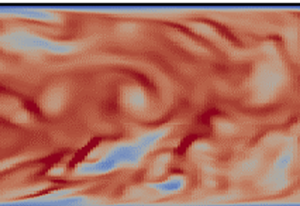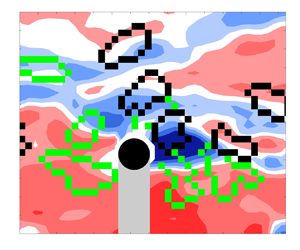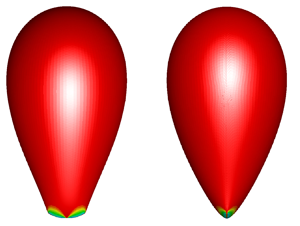Refine listing
Actions for selected content:
1417116 results in Open Access
Pediatric Medical Countermeasures: Antidotes and Cytokines for Radiological and Nuclear Incidents and Terrorism
-
- Journal:
- Disaster Medicine and Public Health Preparedness / Volume 18 / 2024
- Published online by Cambridge University Press:
- 23 April 2024, e76
-
- Article
-
- You have access
- Open access
- HTML
- Export citation
Breaking through Depression: New Treatments and Discoveries for Healing by Philip Gold. Allen Lane. 2023. £25 (hb). 272 pp. ISBN 978-0241659052
-
- Journal:
- The British Journal of Psychiatry / Volume 224 / Issue 5 / May 2024
- Published online by Cambridge University Press:
- 23 April 2024, pp. 182-183
- Print publication:
- May 2024
-
- Article
-
- You have access
- HTML
- Export citation
Anatomie d'un populisme émergent ? La communication en ligne du Parti conservateur du Québec
-
- Journal:
- Canadian Journal of Political Science/Revue canadienne de science politique / Volume 57 / Issue 2 / June 2024
- Published online by Cambridge University Press:
- 23 April 2024, pp. 427-451
-
- Article
-
- You have access
- Open access
- HTML
- Export citation
RES volume 60 issue S1 Cover and Back matter
-
- Journal:
- Religious Studies / Volume 60 / Issue S1 / May 2024
- Published online by Cambridge University Press:
- 23 April 2024, pp. b1-b2
- Print publication:
- May 2024
-
- Article
-
- You have access
- Export citation
The role of psychosis and clozapine load in excessive checking in treatment-resistant schizophrenia: longitudinal observational study
-
- Journal:
- The British Journal of Psychiatry / Volume 224 / Issue 5 / May 2024
- Published online by Cambridge University Press:
- 23 April 2024, pp. 164-169
- Print publication:
- May 2024
-
- Article
-
- You have access
- Open access
- HTML
- Export citation
Resolvent analysis of turbulent flow laden with low-inertia particles
-
- Journal:
- Journal of Fluid Mechanics / Volume 985 / 25 April 2024
- Published online by Cambridge University Press:
- 23 April 2024, A27
-
- Article
-
- You have access
- Open access
- HTML
- Export citation
Power and the Messiness of Discrimination Law: Reflections on the Role of Power in Sophia Moreau's Faces of Inequality
-
- Journal:
- Dialogue: Canadian Philosophical Review / Revue canadienne de philosophie / Volume 63 / Issue 1 / April 2024
- Published online by Cambridge University Press:
- 23 April 2024, pp. 75-84
-
- Article
-
- You have access
- Open access
- HTML
- Export citation
Political Science as a Dependent Variable: The National Science Foundation and the Shaping of a Discipline
-
- Journal:
- Perspectives on Politics / Volume 23 / Issue 2 / June 2025
- Published online by Cambridge University Press:
- 23 April 2024, pp. 665-685
- Print publication:
- June 2025
-
- Article
-
- You have access
- Open access
- HTML
- Export citation
Effect of fluid motions on finite spheres released in turbulent boundary layers
-
- Journal:
- Journal of Fluid Mechanics / Volume 985 / 25 April 2024
- Published online by Cambridge University Press:
- 23 April 2024, A28
-
- Article
-
- You have access
- Open access
- HTML
- Export citation
Unravelling the existence of asymmetric bubbles in viscoelastic fluids
-
- Journal:
- Journal of Fluid Mechanics / Volume 985 / 25 April 2024
- Published online by Cambridge University Press:
- 23 April 2024, A30
-
- Article
-
- You have access
- Open access
- HTML
- Export citation
Incidence and distribution of contralateral lymph node metastasis associated with human papillomavirus-related oropharyngeal squamous cell carcinoma
-
- Journal:
- The Journal of Laryngology & Otology / Volume 138 / Issue 9 / September 2024
- Published online by Cambridge University Press:
- 23 April 2024, pp. 965-972
- Print publication:
- September 2024
-
- Article
-
- You have access
- Open access
- HTML
- Export citation
Temlau Peintiedig: murluniau a chroglenni yn eglwysi Cymru, 1200–1800. Painted Temples: wallpaintings and rood-screens in Welsh churches, 1200–1800. By Richard Suggett with Anthony J. Parkinson and Jane Rutherfoord. 345mm. Pp xii + 366, 275 ills (mostly col). Royal Commission on the Ancient and Historical Monuments of Wales, Aberystwyth, 2021. isbn 9781871184587. £29.95 (hbk).
-
- Journal:
- The Antiquaries Journal / Volume 104 / October 2024
- Published online by Cambridge University Press:
- 22 April 2024, pp. 403-406
- Print publication:
- October 2024
-
- Article
- Export citation
Andreas Kehl, Adjunct islands in English: Theoretical perspectives and experimental evidence (Studies in Generative Grammar 152). Berlin & Boston: Walter de Gruyter, 2023. Pp. xv + 330.
-
- Journal:
- Journal of Linguistics / Volume 60 / Issue 3 / August 2024
- Published online by Cambridge University Press:
- 22 April 2024, pp. 708-712
- Print publication:
- August 2024
-
- Article
- Export citation
MULTIPLE LOOSE MAPS BETWEEN GRAPHS
- Part of
-
- Journal:
- Bulletin of the Australian Mathematical Society / Volume 110 / Issue 3 / December 2024
- Published online by Cambridge University Press:
- 22 April 2024, pp. 554-563
- Print publication:
- December 2024
-
- Article
- Export citation
Lamont (J. L.) In Blood and Ashes. Curse Tablets and Binding Spells in Ancient Greece. Pp. xxviii + 404, ills, maps. New York: Oxford University Press, 2023. Cased, £71, US$110. ISBN: 978-0-19-751778-9. – CORRIGENDUM
-
- Journal:
- The Classical Review / Volume 74 / Issue 2 / October 2024
- Published online by Cambridge University Press:
- 22 April 2024, pp. 387-388
- Print publication:
- October 2024
-
- Article
-
- You have access
- HTML
- Export citation
MORS INDIVIDVA AND AEQVA (SENECA, TROADES 401 AND 434)
-
- Journal:
- The Classical Quarterly / Volume 74 / Issue 1 / May 2024
- Published online by Cambridge University Press:
- 22 April 2024, pp. 364-365
- Print publication:
- May 2024
-
- Article
-
- You have access
- Open access
- HTML
- Export citation
Phenomewide Association Study of Health Outcomes Associated With the Genetic Correlates of 25 Hydroxyvitamin D Concentration and Vitamin D Binding Protein Concentration
-
- Journal:
- Twin Research and Human Genetics / Volume 27 / Issue 2 / April 2024
- Published online by Cambridge University Press:
- 22 April 2024, pp. 69-79
-
- Article
-
- You have access
- Open access
- HTML
- Export citation
Boundary mixing. Part 2. The impact of ventilation
-
- Journal:
- Journal of Fluid Mechanics / Volume 985 / 25 April 2024
- Published online by Cambridge University Press:
- 22 April 2024, A24
-
- Article
-
- You have access
- Open access
- HTML
- Export citation
Scopes, Specula, the Speculative: Histories of Medical Experimentation and Looking in African American Art and Fiction
-
- Journal:
- Journal of American Studies / Volume 58 / Issue 3 / July 2024
- Published online by Cambridge University Press:
- 22 April 2024, pp. 327-356
- Print publication:
- July 2024
-
- Article
-
- You have access
- Open access
- HTML
- Export citation
Dialectical behaviour therapy: effect of a coordinated implementation approach on programme sustainability
-
- Journal:
- Irish Journal of Psychological Medicine / Volume 41 / Issue 3 / September 2024
- Published online by Cambridge University Press:
- 22 April 2024, pp. 401-404
- Print publication:
- September 2024
-
- Article
-
- You have access
- Open access
- HTML
- Export citation














